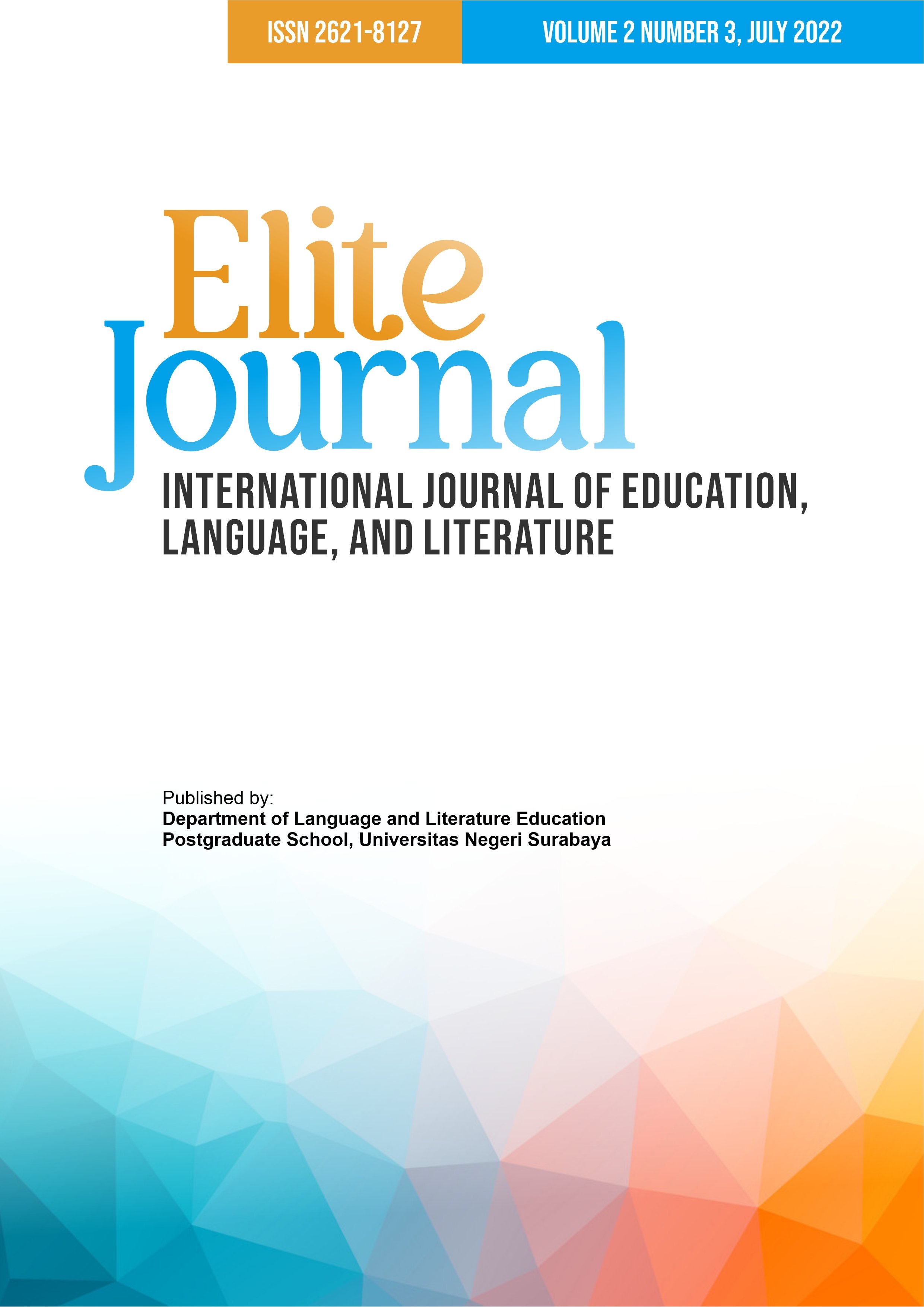DIGITAL LITERACY AND ACADEMIC PERFORMANCE OF STUDENTS’ SELF-DIRECTED LEARNING READINESS
DOI:
https://doi.org/10.26740/elitejournal.v2n3.p127-136Keywords:
digital literacy competence, academic performance, EFL students, self-directed learning readinessAbstract
The students mostly use the internet in communication and academic activities as digital literacy competencies in Industrial Revolution 4.0 era. It is called self-directed learning readiness when the students take the initiative without others’ helping in planning, implementing, and evaluating learning processes. This study aimed to analyze the relationship between digital literacy competence and students’ academic performance in self-directed learning readiness in the English language department in STKIP PGRI Sidoarjo. This study used a quasi-experimental design. The research instrument was a questionnaire and students’ GPA data. The relationship between digital literacy competence and academic performance on self-directed learning readiness was analyzed with a chi-square test. The research variables were measured using an ordinal scale based on the attitudes and statements answered by the students. The data were analyzed using correlation test statistics to test the proposed hypothesis. The analysis of self-directed learning readiness scores showed that 79,2% of students had high levels and 20,8% of students had low levels. Chi-square test results to assess the relationship between digital literacy competence and self-directed learning readiness obtained a p-value of 0.198, and the relationship between academic performance and self-directed learning readiness showed a p-value of 0.493. There was a significant relationship between digital literacy competence and academic performance with self-directed learning readiness in EFL students.
References
Bliss, A. C. (2019). Adult science based learning: the intersection of digital, science, and information literacies. Adult Learning, 20(10), 1-10.
Febyanti, J., & Sari, D. M. (2022). Implementation pair work and storytelling in teaching speaking fluency in elementary school. Journal of Teaching and Learning in Elementary Education, 5(1), 11-18.
Gibbons, M. (2002). The self directed learning handbook: Challenging adolescent students to excel. San Fransisco: Jossey-Bass.
Hyland, N., & Kranzow, J. (2011). Faculty and student views of using digital tools to enhance self directed learning readiness and critical thinking. The International Journal of Self Directed Learning, 8(2), 11-27.
Islamiah, S. F., & Sari, D. M. (2021). Using outlining strategy in essay writing for ELT students. Jurnal Basis, 8(1), 141-152.
Koltay, T. (2011). The media and the literacies: Media literacy, information literacy, digital literacy. Media, Culture, & Society, 33(2), 211-222.
Kwon, S., & Hyun, S. (2014). A study of the factor influencing the digital literacy capability of middle-aged people in online learning. Korean Journal of The Learning Science, 4(2), 120-140.
Madhavi, K. V., & Madhavi, B. D. (2017). Readiness for self directed learning among undergraduate medical students of Andhra Medical College. International Journal Community Medical Public Health, 4(8), 836-847.
Makarim, H., & Sari, D. M. (2021). Google classroom in the English language teaching learning during pandemic covid-19. Jurnal Pendidikan Bahasa, 10(2), 141-150.
Menon, J., & Fink, A. (2019). The fourth industrial revolution and its implications for economic integration in ASEAN. Journal of Asian Economic Integration, 1(1), 32-47.
Rasyad, M. F., & Sari, D. M. (2020). Students' difficulty of essay writing on virtual learning. Jurnal Ilmiah Wahana Pendidikan, 6(4), 867-871.
Sari, D. M. (2019). An overview of genre based approach in EFL writing class. JournE, 1(1), 31-40.
Sari, D. M. (2020). Contextual redefinition: A teaching strategy for enhancing beginner level of reading achievement. Journal of English Educational Study, 3(2), 110-118.
Sari, D. M., & Prasetyo, Y. (2021). Project-based-learning on critical reading course to enhance critical thinking skills. Studies in English Language and Education, 8(2), 442-456.
Sari, D. M., & Wardhani, A. K. (2020). Critical thinking as learning and innovation skill in the 21st century. Journal of English and Language Pedagogy, 3(2), 11-21.
Silamut, A., & Petsangsri, S. (2020). Self-directed learning with knowledge management model to enhance digital literacy abilities. Education and Information Technologies, 25, 4797-4815. doi:https://doi.org/10.1007/s10639-020-10187-3
Downloads
Published
How to Cite
Issue
Section
License
Copyright (c) 2022 Dina Merris Maya Sari

This work is licensed under a Creative Commons Attribution 4.0 International License.
 Abstract views: 5767
,
Abstract views: 5767
, PDF Downloads: 4306
PDF Downloads: 4306





